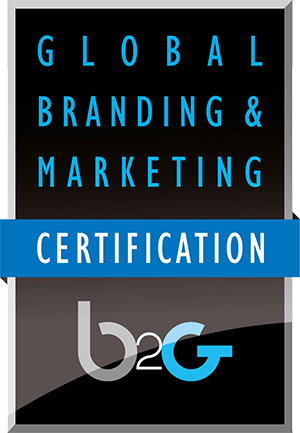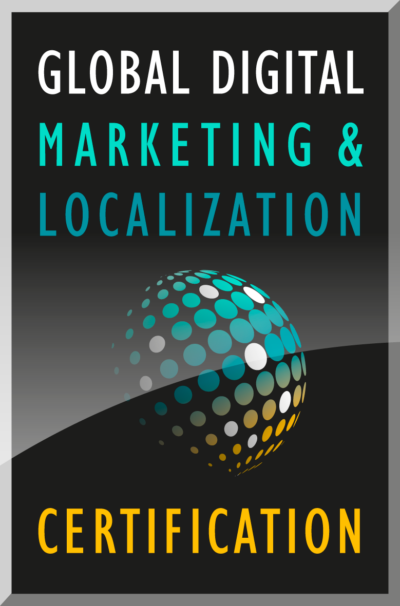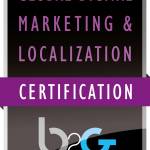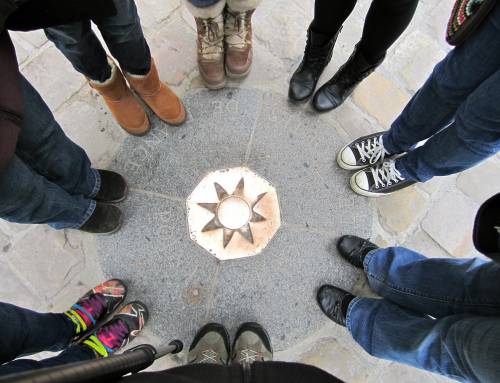This is a paper presented by Rebecca Gordon, a recent graduate of both the Global Digital Marketing and Localization Certification (GDMLC) program. This paper presents the work being produced by students of The Localization Institute’s Global Digital Marketing and Localization program. The contents of this Paper are presented to create discussion in the global marketing industry on this topic; the contents of this paper are not to be considered an adopted standard of any kind. This does not represent the official position of Brand2Global Conference, The Localization Institute, or the author’s organization.
We are living in the digital age and the field of learning is changing. With enterprises becoming more global and diverse, work is becoming increasingly mobile and learning has needed to adapt to the changing landscape, not only through the localization of learning but also the localization of how we share and market it to employees. Building learning programs that are both global and local or “glocal” has become more complex yet the need to do it is more important than ever. Adding to the complexity, as the world has globalized, it has become more difficult to generalize cultural tendencies. What about the Syrian refugee living in Germany for the past 6 years or the expat American living in Brazil for the past 15 years? We have been forced to reexamine the assumptions and biases that once drove how we built and marketed learning to international audiences. Beyond that, think about how a group of older learners’ needs be met when a program is built with the tendencies of millennials in mind. Luckily, the digital age has also made it easier to accommodate those changes.
What is learning in the digital age?
With learning becoming a key element in an employee value proposition to hire and retain top talent, companies have had to invest in building out comprehensive learning programs that cater to individual, local, and global needs. To accommodate these personal and cultural preferences, learning programs have been using a blended approach combining the many different ways there are to learn, both in-person and digitally. The depth of these experiences can range from highly interactive, where the learner participates in the creation of and dialogue within the learning program itself, to more of a one-way experience where they are observing learning on a device with little interaction. Examples of the former include experiential learning, simulations, social learning through mentorship and feedback, discussion groups and more. Examples of the latter include micro-learning served up in an e-learning ecosystem that brings together internal content and external content stored in a learning management system.
How to localize learning in a global environment?
When building learning for a global company, you must consider whether you are going to standardize or localize.
When localizing, one must think beyond internationalizing e-learning and the obvious language translation and adaptation of images, colours and symbols. Also consider Geert Hofstede’s 5 cultural dimensions. (Geert Hofstede Cultural Dimensions, n.d.)
- Individualistic/collectivist: In a traditionally collectivist culture you may need to expand a learning module to include more opportunities for learners to connect and discuss ideas with each other by creating a MOOC (Massive open online course) instead of a traditional one-and-done virtual instructor-led course
- Masculine/feminine: In a traditionally masculine culture, you may need to change the narrator from a female voice to a male voice.
- Uncertainty avoidance: Where uncertainty avoidance is high, an instructional designer may spend more time at the outset of the course, setting expectations and outlining the course structure and what is to come.
- Power Distance: It may be harder for a course designer to seek input from the collective so crowd-sourcing a learning solution may not be a possibility where power distance is high.
- Long term/short-term: You may build in more cultural references and refer to traditions where people have a short-term time perspective.
But what about the millennial Francophile from Japan? Or the older Australian living in Mexico? The more we can empower the learner to be an active participant in their learning journey and the better we market learning to employees around the world, the easier it is to create a personalized experience to accommodate each individual and the way they like to learn. Some ways to do that are to:
- Leverage machine learning to track individual tendencies and recommend/personalize learning based on individual, locale, culture, gender, past consumption etc. Gather insights from SEO and SEM to help cater to your learners across the globe.
- Harness the power of global collective intelligence: empower the learner to be a part of the creation of learning content through the co-creation of learning (crowdsourcing) or give the learner full control by enabling them to integrate user-generated content into the LMS.
- Use social media to build learning communities and empower learners to share and learn from each other, ask questions, provide insight.
- Create intra-company marketing campaigns. Leverage mailer systems and digital signage to tell learners about new classes. Leverage enterprise social media technology like Yammer and use a hashtag like #learnsomethingnew to generate buzz.
The Microsoft example (Whittinghill, 2018):
Let’s look at Microsoft, a multinational corporation with over 120,000 employees around the world. As the CEO Satya Nadella has said: “we are moving from a group of people who know it all to a group of people who want to learn it all”. How does a company with over 120,000 employees from dozens of cultures located across 6 continents go about doing that? The first thing they decided was that they wanted both a standardized and localized approach to learning, implementing a central learning management system with one global brand, Microsoft Learning, where all employees could access learning opportunities both digital and in-person. Then they set out to serve up personalized and adaptive learning experiences leveraging employee profiles and habits to make course recommendations. Where are they located, what role and organization are they in, are they male or female, diverse, what learning have they consumed in the past? Think of Netflix but with learning solutions. Microsoft empowers employees to be a part of both the creation and the marketing of learning content. They also bridge the divide between corporate and personal learning by serving up syndicated content from Linkedin Learning, Pluralsight, Safari and more. They give the learner control by allowing them to bring in content from around the world and across the web, whether it be YouTube, Ted Talks, Alibaba and more. Where uncertainty avoidance is low, an employee can create his/her own content in PowerPoint or create his/her own videos and share them with colleagues around the world using the Learning platform. Where people are driven by status, they can sign up for classes through OpenEdx and get an official certification or degree through the platform. And this is only the beginning of Microsoft’s learning journey.
With the way we learn becoming more digital, we are more empowered than ever to consume learning in the way that best suits us. The web has given us access to millions of podcasts, videos, articles, courses. We also have the tools to create our own learning content and experiences. Online communities have allowed us to learn from each other, share with each other, with easier access to experts, to get real-time answers to our questions as well as forums to connect with people with the same interests and passions from around the world. We are connected in a new way. We are learners with individual, local and global tendencies. Through technology, companies can enable every employee, no matter where in the world they are, to teach, learn from, and share with each other.
Author Bio:

Rebecca Gordon graduated from the University of Toronto with a Degree in International Studies with Minors in Spanish, Portuguese and French. Originally from Montreal, Canada, her passion for languages and culture started at a young age and led her to live, learn and work across 6 continents and languages (English, French, Spanish, Portuguese, German, Italian). A lifelong learner, she currently calls Seattle, Washington home and is the Learning Manager at Starbucks for Latin America and the Caribbean.
Connect with Rebecca:
Connect with Rebecca on LinkedIn
Email: rgordon01[at]hotmail.com
Dr. Singh’s course provided valuable knowledge that I could apply directly to my work in global learning. Thinking about localization not just through the lens of translation and UI adaptation, he brought the culture-side of localization to the forefront which will be hugely valuable to me in my role leading learning in multi-lingual and multi-cultural regions.
References:
Dr N. Singh (2018). Cultural Customization of Digital Media: An Imperative. http://www.brandquarterly.com/cultural-customization-of-digital-media-an-imperative
Challenging Business Assumptions about How Workers Learn. (2018, December 8). Retrieved from Towards Maturity: https://towardsmaturity.org/2018/12/06/challenging-business-assumptions-about-how-workers-learn/
Geert Hofstede Cultural Dimensions. (n.d.). Retrieved from Clearly Cultural: http://clearlycultural.com/geert-hofstede-cultural-dimensions/
Whittinghill, J. (2018, October 12). From Colleagues to Classmates: Building a Culture of Learning. Retrieved from Linkedin: https://www.linkedin.com/pulse/from-colleagues-classmates-building-culture-learning-joe-whittinghill/
Disclaimer










